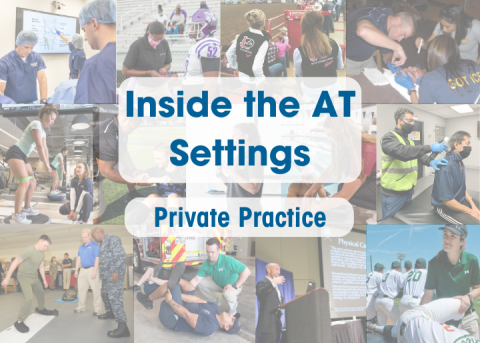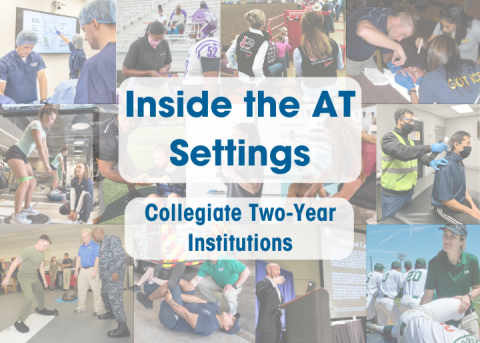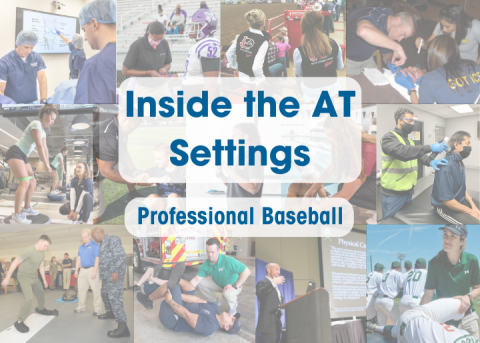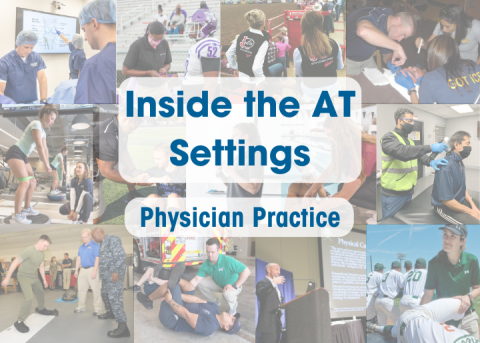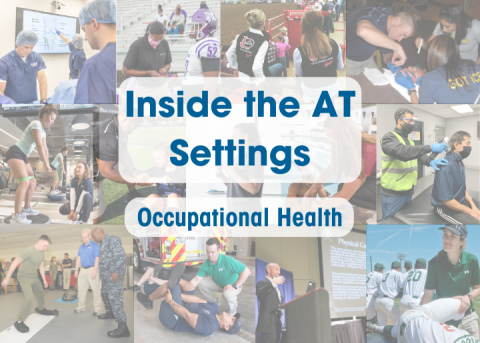
Introduced in the April NATA News, this NATA Now article series provides insight into the different athletic training settings as well as information athletic training students and interested ATs need to know. The series also provides tips from members on how to succeed in each setting.
Keith Webster, MA, LAT, ATC, athletic trainer employed by WorkCare Inc., has been in the occupational health setting for nine years. Webster said he had seen firsthand the impact ATs in the occupational health setting have on industrial workers as well as their employers.
“After spending the majority of my career working in the competitive athletic setting, I took the opportunity to work in the industrial setting,” he said. “Athletic training education fully prepares us to work with this set of athletes. Our educational domains meet the needs of this patient population perfectly.”
Get more insight about the occupational setting from Webster.
Typical Makeup of Your Population
I see people of all ages, genders, nationalities, with military experience, etc. They range from those entering the workforce for the first time to seasoned veterans. They all have one thing in common: They strive to achieve the goals set by their employers to meet key performance indicators. It’s inspiring to see such a diverse population of workers pulling together, supporting one another while working hard to provide a living for their families and loved ones.
Non-AT-Related Skills/Education/Certification Required or Helpful for Your Setting
In order to better understand the role we play and to enhance our effectiveness when providing athletic training services to this workforce, there are other forms of professional development. We quickly find out that we need to learn the new “rule book,” i.e., the Occupational Safety and Health Administration (OSHA). OSHA creates policy and enforcement of rules that govern employers’ obligation to protect the health and safety of their workforce. We play a key role in accomplishing these objectives. Safety is a key factor as it relates to the health and well-being of our industrial athletes. Learning from the safety team really brings an understanding of many causes of injuries.
Ergonomics also plays a key role when it comes to protecting the health of workers. Learning more about ergonomics can enhance our understanding of how some musculoskeletal injuries occur and, thus, can assist in the prevention of additional chronic overuse injuries.
Common Injuries Observed or Encountered in Your Setting
The majority of injuries are caused by repetitive motions leading to overuse of the musculoskeletal system required on many jobs. We are also prepared to care for acute, traumatic injuries that can and, unfortunately, do result in fatalities. Other health issues are important to address, such as nutrition, sleep/rest and mental health.
Traits of a Successful AT in Your Setting
I believe traits necessary to be successful in this setting include confidence in our skill set, empathetic personality and genuineness. We are health care providers who truly care for our patients and that doesn’t change when working with industrial athletes.
Misconceptions About Your Setting and/or Patient Population
I believe that there are misconceptions about our patient population. Many don’t see them as “athletes,” but they train, condition, are focused and feel the necessity to provide for a family based on their performance and longevity at work. I call these workers “professional athletes” since they actually take home a paycheck based on their performance. The notion that workers would rather sit at home collecting workers’ comp checks, for example, just doesn’t make sense. They feel a true purpose of working hard for a living – in addition to the fact that the amount of these checks given while not working are far less than the paychecks earned for working.

